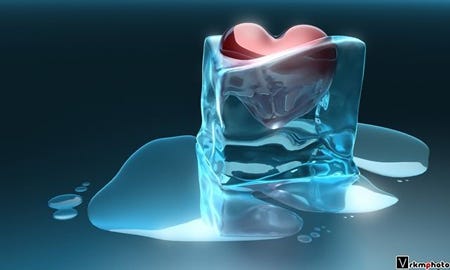How Cryopreserving Organs Is Closer to Reality
February 4, 2016
|
|
|
Researchers are getting closer to cryopreserving organs. Here's how.
Qmed Staff
A human heart can only survive only four to six hours between a donor's death and transplant. Livers only do a bit better: 12 hours. And kidneys only last 36 hours.
There's more reason to hope, though, that someday all these organs could be frozen and thawed out at a later date with little damage, ensuring that every organ harvested after someone dies makes it into a living person who needs it, according to The Economist.
Freezing and reanimating entire people is more between a "fantasy and a fraud," the magazine says. (Celebrated futurist Ray Kurzweil is much more optimistic, and plans to have himself frozen after death. See him deliver a keynote address at MD&M West, February 9-11, in Anaheim, CA.)
A number of recent research advances, however, suggest that cryopreserving organs might be doable:
The sugar trehalose has shown some promise when it comes to minimizing the damage from ice crystals in frozen tissue, but it is hard to absorb into cells. Last year, a group of researchers in Boston, including bioengineer Mehmet Toner, PhD, of Harvard Medical School, reported that they were able to overcome this challenge by tagging on acetyl groups to trehalose. The acetylated trehalose enabled the freezing and reviving of rat cells.
University of Minnesota cryobiologist and engineer John Bischof and his colleagues have hit on a novel way to quickly warm a frozen organ. The idea is to add magnetic nanoparticles to cryoprotectant, and then use fluctuating magnetic fields to quickly heat it up, according to the BBC.
New imaging technologies could help researchers better understand the ice formation process, too. For example, researchers at Carnegie Mellon University in Pittsburgh have created a device enabling full-color thermal imaging at high resolutions in large volumes of tissues, says BBC. Meanwhile Villanova University researchers in 2013 reported that they had caught ultra-slow-motion video footage of microscopic ice penetration in tissues.
Ido Braslavsky at Hebrew University in Jerusalem has made strides understanding how certain cold-resistant organisms such as fish use proteins to combat ice formation, according to The Economist.
Despite the recent advances, there are still many hurdles to overcome. Carnegie Mellon University professor Michael J. Taylor sounded a sobering note to the BBC in 2014: "No cryopreservation technique ever offers 100% survival of the component cells. In many applications this can be tolerated but for a single organ this may be a significant amount of injury to repair post-storage or transplantation."
(Celebrated futurist Ray Kurzweil plans to have himself frozen after death. See him deliver a keynote address at MD&M West, February 9-11, in Anaheim, CA.)
Chris Newmarker is senior editor of Qmed and MPMN. Follow him on Twitter at @newmarker.
Like what you're reading? Subscribe to our daily e-newsletter.
About the Author(s)
You May Also Like




.png?width=300&auto=webp&quality=80&disable=upscale)
